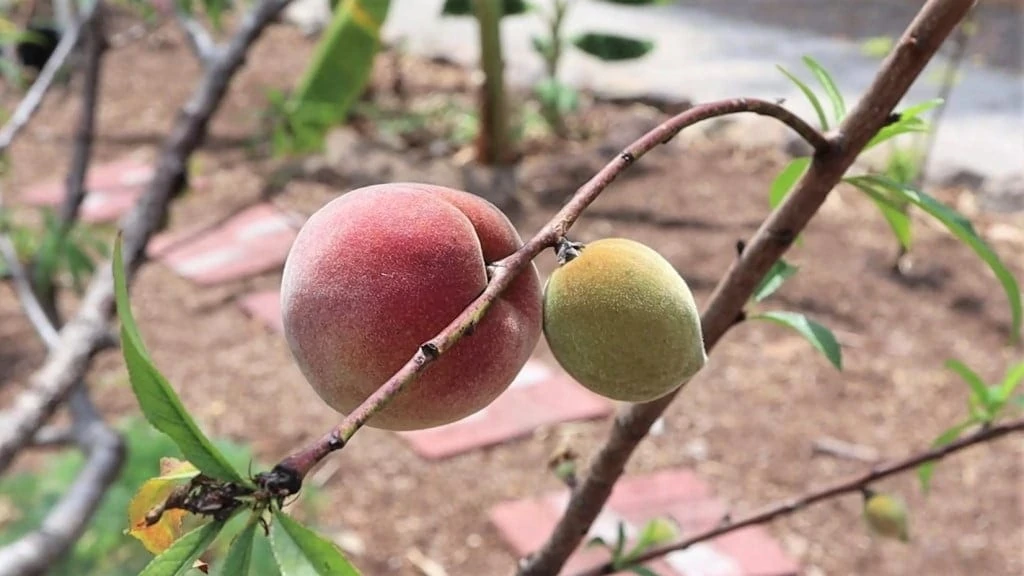by Amanda Rose Newton
With the continued uncertainty brewing in the citrus industry in Florida, the shift to consider other fruit varieties has begun. If you have been longing for the stone fruits you might have enjoyed further North or West, you are in luck. The University of Florida has crafted 5 varieties of the stone fruit that do not require excessive chill hours to produce fruit: The Flordaprince, Tropic Beauty, Flordasun, Flordagem, and Flordabest.

Years of research has allowed us to get the most out of those December and January cold days to produce tasty peaches as early as March. A bonus: Most trees you buy should be bearing fruit within a year. Instant gratification!
Peach Considerations
If you are looking for huge, juicy, Georgia-style peaches, our Florida peaches are not those. They are smaller, redder, and have a larger flesh to pit ratio than their Georgia cousins. They pack a satisfying crunch and a sugary-sweet taste that children especially find pleasing. The red color, though attractive, also makes it difficult to detect ripeness as usually one can tell from the shift in color from pale yellow to an orange/red.
Still interested? Read on for tips for successfully growing your own Florida Peach!
Planting Your Tree
When selecting a variety, do your research! Though the differences between the five might be slight, to some the little attributes make all the difference. Typically in May, peaches are available in the Farmer’s market by the pound, so add some to your curbside order to get an idea on flavor.
The Perfect Spot
Peach trees are most productive grown in full sun. If you are going to plant more than one, make sure they are at least 15 feet apart and not too close to buildings.
Prepare your site by using 1-part Rockledge Garden’s planting mix and 1-part existing soil to backfill the hole. Add a cup of an organic fertilizer, such as Espoma Biotone to give it a boost.
Ensure that you follow our instructions for watering new plantings and keep to the schedule. One thing to be aware of– peaches do not do well with salt, and that goes for salt spray! If you live beachside, you might want to rethink your decision to plant.
Pests and Disease
As of now, peaches seem to have less issue with disease and pests than citrus. However, you should still have an eye out for the usual fungi and pests that present themselves on most fruit, namely mildews, mealy and scale bugs, and rots. Following the recommended practices for planting, watering, and fertilizing keeps your plants healthy and makes them less inviting to pests.
Feeding Your Tree
As with most fruit trees, peaches are typically hungry for nutrients that do not present in our soil and generally take readily to fertilization every 3 months with an organic product, such as Espoma Tree Tone.
If you are looking for a fruit that will produce in less than three years or a smaller canopy layer for your food forest, give peaches a chance! They might just make you consider switching over from team Georgia!
Check out the peach trees we have in stock here.


